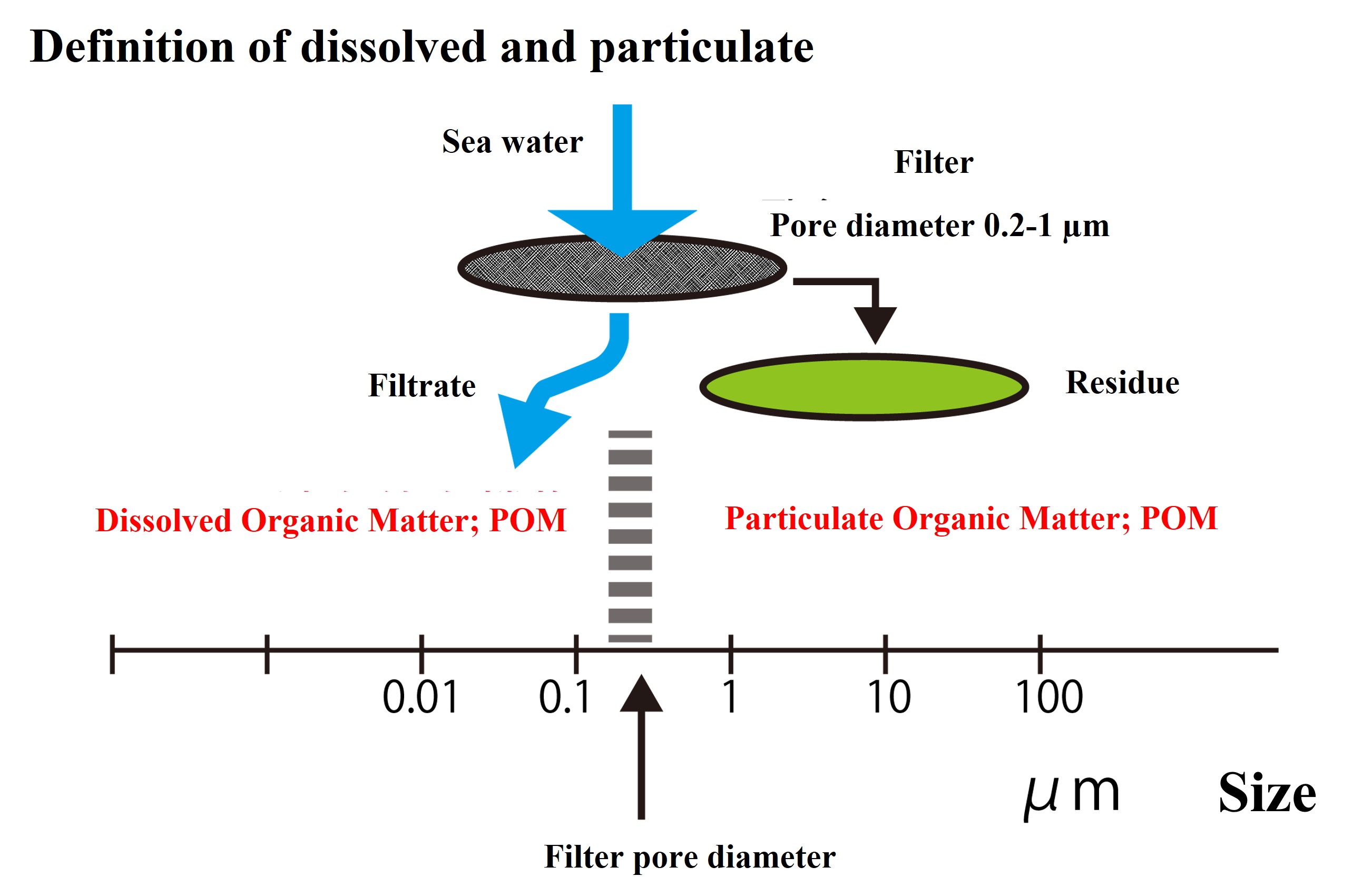Classification of dissolved and particulate
In the field of aquatic environmental science, including oceanography, we distinguish between "dissolved" and "particle" forms of matter in water. It is defined as the "dissolved" substances contained in water that is filtered through a filter with a pore diameter of 0.2 μm to 1.0 μm and the "particulate" substances trapped on the filter.

--------------Definition of particle and dissolved forms-----------------------------
Filtration of seawater with pore size from 0.2 μm to 1.0 μm
Substances captured on the filter are defined as "particle state".
Substances that pass through the filter are defined as "dissolved"
Therefore, even colloidal particles and polymeric organic particles dispersed in water are classified as dissolved if they pass through a 0.2 μm filter. (In the field of physical engineering, colloidal particles dispersed as solids in water are defined as "particles".)
Why does oceanography separate the "dissolved" and "particle" by the presence or absence of 0.2 to 1 μm pore passage? One problem with this is the time and effort required to process natural water. If one were to filter a few hundred mL of seawater sample through a 0.01 μm filter, it would take dozens of hours, which is too much work. Seawater contains a lot of ultrafine particles, such as colloidal particles, that quickly clog the filter. If we increase the pore size of the filter to 0.2 µm, the filtration time would only take a few minutes. In other words, for the convenience of the experiment, we have decided to define substances above 0.2 μm (or above 1.0 μm) as the "particulate" and substances below 0.2 μm (or below 1.0 μm) as the "dissolved".
It is also convenient to separate the particles by 0.2 µm or 1.0 µm, since most organisms are generally classified in particulate fraction. However, the dissolved fraction also contains some microscopic bacteria and viruses, but nonliving organisms are more abundant in quantity, and in general, more than 99% of the organic matter in the dissolved fraction is nonliving organic matter.
